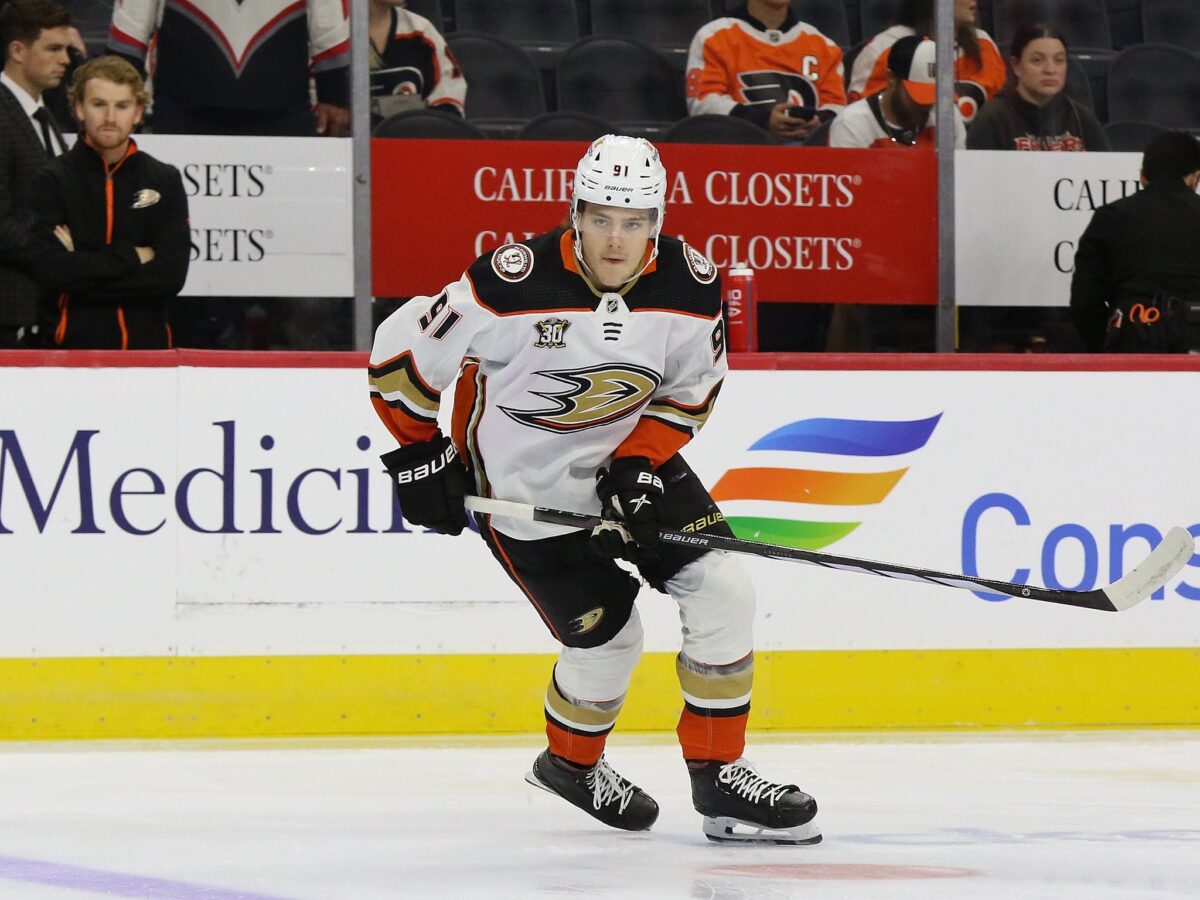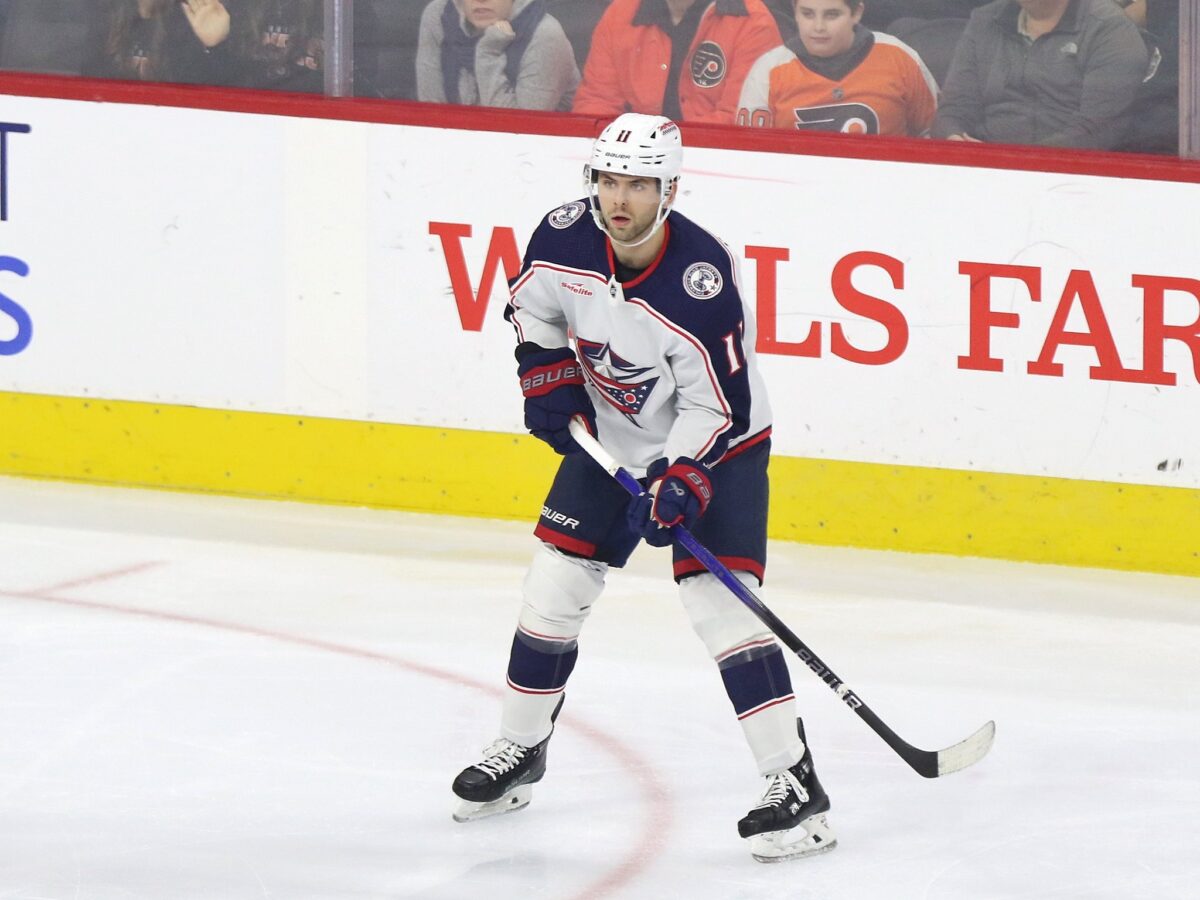Leo Carlsson and Adam Fantilli have yet to play each other in an NHL game. That is not because the Anaheim Ducks and Columbus Blue Jackets have yet to meet on the schedule. They have, and the Ducks came away with the overtime victory. It was the sixth game of the season, and Carlsson sat the contest as part of general manager Pat Verbeek’s early season development plan for the rookie. The two clubs won’t see each other again until Feb. 21.
Both players have played enough games now that a comparison between the two seems like a fun exercise. Let’s compare the rookie seasons so far between the second and third overall picks in last summer’s draft.
A Tale of the Tape
Both Carlsson and Fantilli displayed elite talent and potential on their path to becoming lottery picks in the 2023 Draft. Let’s start with Carlsson, the 6-foot-3 Swede with all-world speed and puck handling.
His draft year included a healthy (and successful) dose of major international and professional competition. In the Swedish Hockey League (SHL), he played for Obreko HK and put together a 10-goal, 15-assist stat line in 44 games as a 17/18-year-old. We’ve covered his 2022-23 SHL season extensively, so it will suffice to say that it was one of the more impressive rookie seasons in recent SHL memory.

Internationally, he dressed for Sweden in both the World Junior Championship (WJC) and World Championship. Carlsson is a big kid, and he showed it against his fellow 20-year-olds in the WJC. Though Sweden placed fourth, he produced six points (three goals, three assists) in the tournament. As an 18-year-old, he performed admirably against grown men in last summer’s World Championship, when he produced five points (three goals, two assists) in eight games. There is no doubt that his performance in the World Championship beefed up his resume ahead of the draft.
Fantilli’s draft season, on the other hand, was on the NCAA circuit with the University of Michigan. He also competed in the same international tournaments – WJC and World Championship – that Carlsson did. Fantilli accomplished much in his lone season at Michigan. He won the Hockey Commissioners Association Men’s Player of the Month Award in October and January. He became the first player that season to eclipse the 50-point mark. He compiled 65 total points (30 goals, 35 assists) in 35 games, good for a 1.80 points-per-game average. His performance earned him nominations to the All-Big Ten Freshman and All-Big Ten Conference Teams. And finally, he was awarded the Tim Taylor (NCAA’s best freshman) and Hobey Baker (NCAA’s top player) Awards. He became the third freshman after Paul Kariya (1993) and Jack Eichel (2015) to win the Hobey Baker Award. At the NCAA level, his IQ, speed, and creativity were elite.
Internationally, Fantilli teamed up with Connor Bedard to form a dynamic one-two punch up front for Team Canada at the WJC. He recorded five points in seven games on the path to gold. Though Team Canada would also win gold at the World Championship, Fantilli didn’t fare as well as Carlsson did. He finished with three points and 29 penalty minutes in 10 games. He is only one of two Canadians ever to win a World Junior Championship and World Championship gold in the same year.
So, they had decorated pre-draft resumes. It’s precisely what made picks two and three of the draft so intriguing. The Ducks and Blue Jackets both believe they got their man, so fair play.
A Comparison, By the Numbers
Below are some basic side-by-side statistics for Carlsson and Fantilli. Of course, these figures don’t tell the complete story of a player, but they are useful for our comparison today:
| Carlsson | Fantilli | |
| Games Played | 23 | 35 |
| Goals | 8 | 9 |
| Assists | 7 | 11 |
| Points | 15 | 20 |
| Plus/Minus | Minus-5 | Minus-10 |
| Ice-Time per Game | 18:02 | 15:29 |
Carlsson has yet to be an everyday player because of Verbeek’s plan to preserve his health and longevity. Despite those efforts, he sadly wound up hurt in the Ducks’ loss to the Calgary Flames on Dec. 21. Just the worst possible break for Carlsson and the Ducks, who have been saddled with the injury bug all season long. It’s a right MCL sprain for Carlsson, and his projected recovery timeline is four-to-six weeks. Given how cautious Verbeek was with Carlsson before the injury, we should probably consider the possibility that Carlsson will miss much more time than that.
All that said, Carlsson has put together an impressive rookie season. Tasked with top-line center duties right from the get-go, he has been fast, smart, and responsible in all three zones. He scored in his first game against the Dallas Stars and already has a hat-trick to his name. The eye test can tell you that he can make plays on his own and for his teammates with his speed and creativity. Before Trevor Zegras went down with his injury, Carlsson played with him and Troy Terry, which was a scintillating trio. After Zegras went down, Carlsson centered a line between Terry and Alex Killorn. The point is, that he makes whoever he plays with better, and the Ducks’ lineup is far more dangerous with him in it. Hopefully, it’s not too long before we see him on the ice again to continue his rookie campaign.
Related: Ducks Can Blaze New Trail with Carlsson’s Development Plan
Now, onto Fantilli, who is not on a player development plan and has suited up for all 35 of the Blue Jackets’ contests. Like the Ducks, the Blue Jackets are a young and incomplete team and subsequently, like Carlsson, he is surrounded by explosive yet underperforming talent on offense. Try as he might, Fantilli and the rest of the Blue Jackets’ offense cannot keep up with the opposition because of their inability to keep the puck out of their own net. Even still, he sits third in rookie scoring with his 20 points, trailing only Connor Bedard and Marco Rossi (Carlsson ranks 12th and fellow Ducks rookie Pavel Mintyukov ranks fourth).
Fantilli is quick, sees the ice exceptionally well, and can make plays with his feet and his hands. Something noteworthy though – he plays two-and-a-half minutes less per game than Carlsson. While he quickly became an all-situations player for the Ducks, Fantilli has yet to become that for the Blue Jackets. Carlsson’s two-way game, at this point, is a bit more polished.
Who Has the Bigger Second Half?
The question now becomes, where does each player go from here? We knew neither player was going to change the fortunes of their franchise overnight, so Carlsson, if and when he gets healthy, and Fantilli are going to use the rest of their rookie seasons to get their reps in and acclimate to the good and the bad of the professional game. Bedard might lead the rookie scoring race and stand as the season-long favorite to win the Calder Trophy, but these two are all-world talents in their own right and should have a case for consideration by season’s end.

Given the recency of Carlsson’s injury and the uncertainty surrounding the Ducks’ plan with his recovery, the default answer is that Fantilli will go on to have a better second half of the season. Whether that means better team results remains to be seen. One thing is for sure though, both skaters have bright futures in the NHL.
